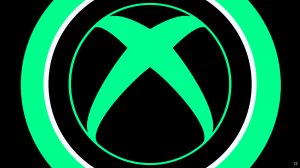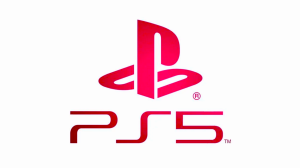In November, Square Enix released Tactics Ogre: Reborn, a modern remake of one of the greatest tactical RPGs of all time, Tactics Ogre: Let Us Cling Together. It turned out pretty well. Using the previous PSP port as a base, the Tactics Ogre Reborn team upgraded the graphics to high definition, gave the game voice acting for the first time, and added some modern quality-of-life upgrades like autosaving and faster combat gameplay. All of that in addition to the original epic story that remains nearly unrivaled for depth and quality in all of gaming. With branching narrative paths that change the player’s experience of the story, including affecting the ending, and plenty of endgame combat and replay value, it’s a fan of the genre’s dream.
Videos by ComicBook.com
ComicBook.com had the chance to email some questions over to the development team to ask about Tactics Ogre: Reborn, their guiding design principles, hopes for the game to find a new audience, and what it might mean for the Ogre series’ future. Here’s what they had to say:

There are plenty of passionate Tactics Ogre fans who are eager to play this modernized version of the game. But what about those who haven’t played it, who are TRPG fans that never got ahold of it, who tried an earlier version and it didn’t hook them, or who are entirely new to the genre? How would you pitch Tactics Ogre: Reborn to them?
Hiroaki Kato – Producer: For those who have never played the original or the PSP version, the first and foremost point of appeal is the elaborately constructed world/lore and story. This is a highly emotional ensemble drama that skillfully combines fiction and realism, told through the perspectives of young characters struggling between their ideals and reality amidst a regional conflict in which various ideologies intersect. On top of all this, the story will branch out, forcing players to make choices leading to unexpected endings. Various shocking developments await the player.
Other features include the highly tactical battles that incorporate the concept of verticality with the quarter-view, UI that pursues ease of operation and visual clarity, and high-quality music that enhances the story and battles. The list goes on and on, and we hope you enjoy the reasons why this game is the gold standard for Tactical RPGs.
For those who have played the game in the past, the fully voiced cutscenes will bring new insights and different impressions compared to the PSP version. In addition, we revamped the battle design, including the enemy AI and character development system. The game adopts the best aspects of the original and PSP versions, as well as incorporates new elements, allowing players to experience the simple joy of thinking about how to modify each unit’s growth by changing their class, how to combine armor, skills, and magic, and how to challenge enemy units (AI) that change dynamically according to the battle situation. Various other improvements have been made for the players’ comfort, including a double-speed mode and an auto-save function, so you will be able to enjoy the game with a sense of freshness.
There’s always a dance with remasters like this between respect for the original and the demands of modern games and players. Is there a guiding philosophy you had in place when it came to deciding what should be changed and what had to remain the same?
Naoyuki Takahashi – Lead Game Designer: Our core guiding principle was to reduce the stress factor in order to achieve a modern gameplay feel. In doing so, however, emphasis was placed on preserving aspects that were well-received by users, as well as important elements from the original version. We had saved information gathered from user evaluations and were able to hear the thought process behind the original version directly from the staff who worked on it, as they were also part of the development team for this title.
A specific example is the change in gameplay speed. We wanted to avoid simply fast-forwarding things. The reason for this was to preserve the pacing and production of the original. We meticulously adjusted the speed for things like the attack animations or the delay between attack execution and display of damage, etc., so that it is generally more than twice as fast as before. We also tried to keep the sound consistent with the original by processing it so that it didn’t sound too high-pitched when sped up.
Similarly, I’ve read elsewhere that Yasumi Matsuno has tweaked the script somewhat. Are there any significant changes to the plots or characters, or are these changes all about matching the voice acting that’s been added in Reborn?
Kato: The cutscenes in this game are fully voiced, so Yasumi Matsuno, who was in charge of the game design, scriptwriting, and supervision for the Japanese voice recording, carefully reviewed the scenario and made revisions to the text. Specifically, we placed an emphasis on text as something to be listened to rather than read. Although there are no additional events, the dialogue has been modified to express the subtleties of the characters according to the voice actors’ casting. The Pirate Azelstan is a prime example of this, and we believe that he will leave a different impression in ‘Reborn’ when compared to the PSP version. While considering the recording of the Japanese audio as described above, the recording of the English audio proceeded under the guidance of Kajiya Productions, Inc., who were also responsible for the translation of the English text.
The visuals have also been updated while maintaining the original pixel-style art. This is another case of balancing staying true to the original with modern demands, I assume. What can you say about the philosophy and decision-making process that went into creating Reborn‘s look?
Takashi Katano – Director: As you noted, we were careful about making the best of the original pixel art while balancing it with resolution. Since things would look unbalanced overall if the resolution differed only in certain areas, we adjusted the resolution of the units, backgrounds, UI, icons, and font renderings so that nothing looks out of place when viewed as a whole, and also so that their differences are visually apparent during battles since there are now even more elements in the game.
Do you consider this the definitive Tactics Ogre experience? Or more something new that’s inspired by the original?
Kato: It has been 27 years since the original version was released and 11 years since the PSP version was released, so there are various ways to look at the game, such as the “definitive version” or a “brand new title,” depending on whether or not customers have played the game before. One thing I can say is that we developed the game based on the idea that this is what Tactics Ogre would look like if we utilized current-gen technology to create a “reborn” Tactics Ogre as a more user-friendly and modern game.
There hasn’t been a new Ogre game since 2002’s Knight of Lodis. Do you think a successful launch for Tactics Ogre Reborn could lead to new installments of the series? Similarly, is there any interest in re-releasing the other entries in the series, or even bringing Prince of Zenobia out of Japan for the first time? Or is there something particularly special about Tactics Ogre that makes it stand apart from the rest of the series?
Kato: First of all, we hope that many customers will take the time to play Tactics Ogre: Reborn and that it will become a long-time favorite as a standard Tactical RPG title (the amount of endgame content is so vast that you could keep playing forever if you wanted to!). We would then like to consider the future after seeing the reaction of our customers.
Tactics Ogre: Reborn is on sale now for PlayStation 4, PlayStation 5, Nintendo Switch, and Windows PC.








